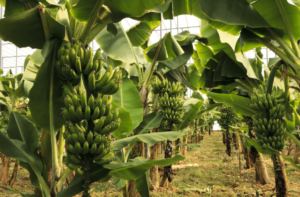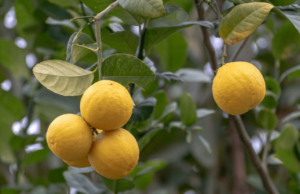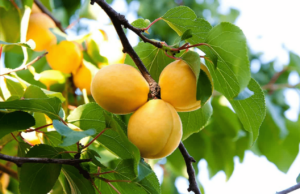Essential Fall Garden Cleanup Tips
Fall garden cleanup is an essential task for any gardener looking to maintain a healthy and thriving garden. As the temperatures begin to drop and the days grow shorter, it’s important to prepare your garden for the winter months ahead. By removing dead plants, clearing debris, and preparing the soil, you can help prevent disease and pests from taking hold in your garden. Additionally, fall cleanup sets the stage for a successful spring garden, as it allows for a fresh start and promotes healthy growth in the coming season. Neglecting fall garden cleanup can lead to a host of problems, including the spread of disease, pest infestations, and poor soil quality. Therefore, taking the time to properly clean up your garden in the fall is crucial for the overall health and success of your garden.
Fall garden cleanup also provides an opportunity to reflect on the past growing season and make plans for the future. By assessing which plants thrived and which struggled, you can make informed decisions about what to plant next year and how to improve your garden’s overall health. Additionally, fall cleanup allows you to tidy up your outdoor space and create a clean and organized environment for the winter months. This not only improves the aesthetic appeal of your garden but also helps to reduce the risk of pests and diseases overwintering in debris. Overall, fall garden cleanup is a vital part of maintaining a healthy and productive garden, and it sets the stage for a successful growing season in the months to come.
Key Takeaways
- Fall garden cleanup is important for maintaining a healthy garden and preparing it for the winter season.
- Removing annual plants and vegetation helps prevent the spread of diseases and pests in the garden.
- Pruning perennials and shrubs promotes new growth and helps maintain the shape and health of the plants.
- Clearing debris and mulching helps insulate the soil and protect plants from harsh winter conditions.
- Preparing the soil for winter by adding compost and organic matter helps improve soil structure and fertility for the next growing season.
- Protecting plants and trees from frost with covers or blankets can help prevent damage to delicate foliage.
- Organizing and storing garden tools properly helps keep them in good condition and makes them easily accessible for future use.
Removing Annual Plants and Vegetation
One of the first tasks in fall garden cleanup is to remove any annual plants and vegetation that have reached the end of their growing season. Annual plants, such as petunias, marigolds, and impatiens, typically die off at the end of the growing season and should be removed from the garden to make way for new growth in the spring. By clearing out these plants, you can prevent disease and pests from overwintering in the debris and ensure a clean slate for next year’s garden. Additionally, removing annual plants allows you to assess which areas of your garden may need additional attention or new plantings in the coming season.
When removing annual plants, it’s important to properly dispose of the debris to prevent the spread of disease. This can be done by either composting the plant material or disposing of it in yard waste bags. Composting is a great option for organic matter, as it can be used to enrich the soil in your garden beds. However, if the plants show signs of disease or pest infestation, it’s best to dispose of them in yard waste bags to prevent further spread. By removing annual plants and vegetation from your garden in the fall, you can create a clean and healthy environment for new growth in the spring.
Pruning Perennials and Shrubs
Pruning perennials and shrubs is an important step in fall garden cleanup that helps promote healthy growth and maintain the overall shape and structure of your plants. As perennials begin to die back in the fall, it’s important to trim away any dead or diseased foliage to prevent the spread of disease and encourage new growth in the spring. Additionally, pruning shrubs helps to maintain their shape and size, as well as promote flowering and fruit production in the coming season. By taking the time to prune your perennials and shrubs in the fall, you can help ensure their overall health and vitality.
When pruning perennials and shrubs, it’s important to use sharp, clean tools to make clean cuts that promote healing and reduce the risk of disease. It’s also important to remove any dead or diseased foliage from around the base of the plant to prevent overwintering pests and disease. Additionally, pruning allows you to assess the overall health of your plants and identify any issues that may need attention before winter sets in. By taking the time to properly prune your perennials and shrubs in the fall, you can help promote healthy growth and maintain the overall beauty of your garden.
Clearing Debris and Mulching
| Task | Time Taken (hours) | Area Cleared (sq. meters) |
|---|---|---|
| Clearing Debris | 4 | 200 |
| Mulching | 2 | 150 |
Clearing debris from your garden beds is an essential part of fall garden cleanup that helps prevent disease and pests from overwintering in your garden. By removing fallen leaves, dead plant material, and other debris from your garden beds, you can create a clean environment that promotes healthy growth in the coming season. Additionally, clearing debris allows you to assess the overall health of your plants and identify any issues that may need attention before winter sets in. By taking the time to clear debris from your garden beds in the fall, you can help maintain a healthy and thriving garden.
After clearing debris from your garden beds, applying a layer of mulch can help protect your plants from winter weather and promote healthy growth in the spring. Mulch helps insulate the soil, regulate temperature fluctuations, retain moisture, and suppress weeds. Additionally, as mulch breaks down over time, it adds organic matter to the soil, improving its overall health and fertility. By applying a layer of mulch to your garden beds in the fall, you can help protect your plants from winter weather and promote healthy growth in the coming season.
Preparing the Soil for Winter
Preparing the soil for winter is an important step in fall garden cleanup that helps maintain soil health and fertility for the coming growing season. After removing debris from your garden beds, it’s important to take the time to assess the overall health of your soil and make any necessary amendments. This may include adding organic matter, such as compost or aged manure, to improve soil structure and fertility. Additionally, testing your soil pH and making any necessary adjustments can help ensure that your plants have access to essential nutrients in the coming season.
In addition to adding organic matter and adjusting soil pH, it’s important to protect bare soil from erosion by planting cover crops or applying a layer of mulch. Cover crops, such as winter rye or clover, help prevent erosion, suppress weeds, and add organic matter to the soil as they break down over time. Additionally, cover crops can help improve soil structure and fertility for the coming growing season. By taking the time to prepare your soil for winter in the fall, you can help maintain its overall health and fertility for the coming season.
Protecting Plants and Trees from Frost

As temperatures begin to drop in the fall, it’s important to take steps to protect your plants and trees from frost damage. This may include covering tender plants with frost cloth or burlap, bringing potted plants indoors, or applying a layer of mulch around the base of trees and shrubs. By taking proactive measures to protect your plants from frost damage, you can help ensure their overall health and vitality through the winter months.
In addition to protecting plants from frost damage, it’s important to take steps to protect trees from winter weather. This may include wrapping young trees with tree wrap or burlap to prevent sunscald or damage from freezing temperatures. Additionally, applying a layer of mulch around the base of trees helps insulate their roots and protect them from temperature fluctuations. By taking proactive measures to protect your plants and trees from winter weather in the fall, you can help ensure their overall health and vitality through the winter months.
Organizing and Storing Garden Tools
After completing fall garden cleanup, it’s important to take the time to organize and store your garden tools for the winter months ahead. This may include cleaning tools thoroughly, sharpening blades, oiling moving parts, and storing them in a dry and secure location. By properly maintaining your garden tools, you can help extend their lifespan and ensure they are ready for use when spring arrives.
In addition to organizing and storing garden tools, it’s also a good idea to take inventory of any supplies you may need for next year’s growing season. This may include purchasing new seeds or bulbs, replacing worn-out gloves or tools, or making plans for any new additions or changes to your garden layout. By taking proactive measures to organize and store your garden tools in the fall, you can set yourself up for success in the coming growing season.
In conclusion, fall garden cleanup is an essential task for any gardener looking to maintain a healthy and thriving garden. By removing annual plants and vegetation, pruning perennials and shrubs, clearing debris and mulching, preparing the soil for winter, protecting plants and trees from frost, and organizing and storing garden tools, you can help ensure a successful growing season in the months to come. Taking proactive measures to clean up your garden in the fall not only promotes healthy growth but also sets the stage for a clean and organized outdoor space for the winter months ahead. By investing time and effort into fall garden cleanup, you can enjoy a beautiful and productive garden year after year.
FAQs
What is fall garden cleanup?
Fall garden cleanup refers to the process of preparing your garden for the winter months by removing debris, cutting back plants, and taking other steps to ensure the garden is ready for the colder weather.
Why is fall garden cleanup important?
Fall garden cleanup is important because it helps to prevent the spread of diseases and pests, prepares the garden for the winter months, and sets the stage for a healthy and productive garden in the spring.
What are some common tasks involved in fall garden cleanup?
Common tasks involved in fall garden cleanup include removing dead or diseased plants, cutting back perennials, raking leaves, cleaning and storing garden tools, and applying mulch to protect plants over the winter.
When should fall garden cleanup be done?
Fall garden cleanup should be done before the first hard frost, typically in late fall. It is important to complete the cleanup before the ground freezes to ensure that the garden is properly prepared for winter.
What are the benefits of fall garden cleanup?
The benefits of fall garden cleanup include reducing the risk of disease and pest infestations, improving the appearance of the garden, and setting the stage for a successful growing season in the spring.



